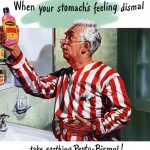In Barker v. Montfort Hospital, released last week, the Court of Appeal had its first opportunity of considering the Supreme Court of Canada’s recent decision in Resurfice Corp. v. Hanke. (Readers will recall that in the latter case, the Supreme Court made it clear that the “but for” test is the appropriate one for courts to apply in evaluating causation and that the “material contribution” test can only be resorted to in exceptional cases where factors beyond the plaintiff’s control make it impossible for him or her to prove that the defendant’s negligence caused the injury on the “but for” test, and where the plaintiff’s injury falls within the ambit of the risk created by the defendant’s breach of his duty of care owed to the plaintiff.)
In Barker, Justices Robert Blair and Paul Rouleau were in the majority; Justice Karen Weiler dissented. The case was one involving allegations of medical malpractice. The trial judge had found liability against the defendant physician, on the basis that his delay in performing surgery on the plaintiff had caused her to lose a portion of her bowel (which had become gangrenous) and to suffer from “small bowel syndrome”.
There were several grounds of appeal, but the three members of the panel differed only on the issue of causation. The majority applied a rather more onerous test than did dissenting Justice Weiler, leading it to allow the appeal and dismiss the plaintiff’s claim.
The majority agreed with the appellant physician, that the plaintiffs had not shown that it had been impossible for them to prove, on a balance of probabilities, that the defendant’s delay in operating had made it necessary to remove a section of the plaintiff’s bowel. For that reason, said the majority, the Supreme Court’s “impossibility” requirement for the use of the material contribution test, could not be met. Applying the “but for” test, the plaintiffs would have had to show, according to the majority, “a substantial connection between the injury and the defendant’s conduct”. Blair and Rouleau JJ.A. held that “no such foundation was laid in the present case. There is a complete absence of medical or other evidence from which to infer that, but for the delay in operating, the section of bowel would likely have been saved.”
Justice Weiler agreed with the majority on all issues save one: causation. She would have dismissed the appeal, on the basis that the trial judge’s findings on this issue were entitled to deference. She also felt that this would be an appropriate case for the use of the “material contribution” test, which, she felt, also supported a finding of liability.
Weiler J.A. did not agree with the majority, that the absence of a “positive medical opinion as to causation” was fatal to the plaintiffs’ case. She cited an earlier decision of the Supreme Court of Canada, Snell v. Farrell, to that effect. She evaluated the evidence in some detail and concluded that the trial judge had been entitled to draw the inferences he did. A “positive medical opinion” was not required for the plaintiffs to succeed on a “but for” analysis.
The defendant had submitted, on the appeal, that it was scientifically impossible to know when the plaintiff’s bowel had become strangled (by a loop developing in it). Justice Weiler turned this submission around and pointed out that if this were true, it meant that the “impossibility” requirement of the “material contribution” test was met. She then determined that short bowel syndrome was within the ambit of the risk created by the defendant physician, with the result the causation was established.

 In
In  Back in January, we posted a commentary about the Divisional Court’s decision in
Back in January, we posted a commentary about the Divisional Court’s decision in